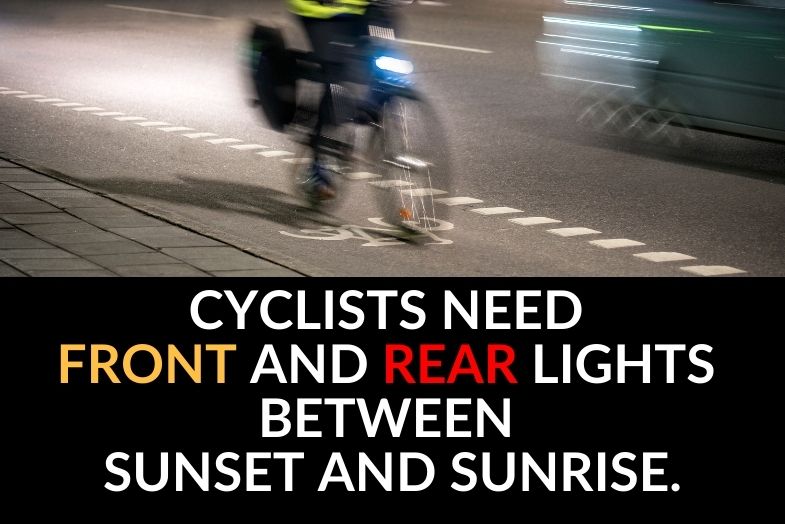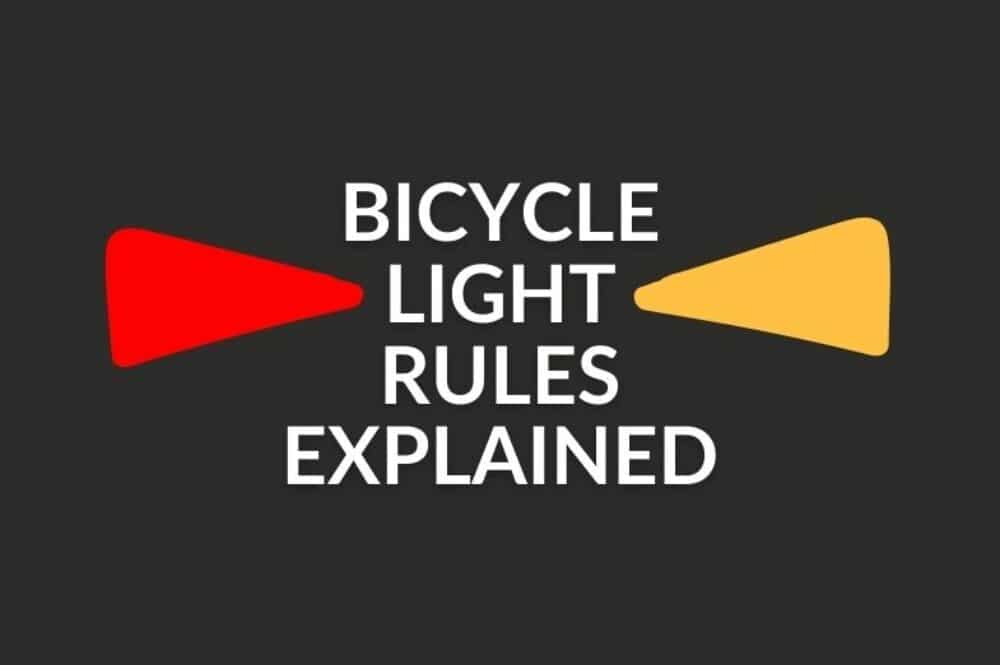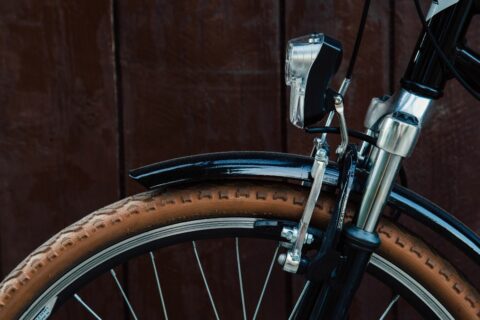This post may contain affiliate links, which help to keep Discerning Cyclist rolling. Learn more.
Discerning cyclists are known for their judgement. They dress stylishly on the bicycle. They do their bit for the environment by commuting. If the wind and traffic are with them they might save some time and money. Although this might not be their highest priority.
This breed appreciates the benefits cycling offers their mental and physical health. In the hope and expectation of prolonging their lives as far as nature allows, they will no doubt seek to use light to illuminate their rides at night. It will help them to see and there are obviously advantages for the discerning cyclist in being seen.

Is it Compulsory to Have Lights on a Bike?
By law, working lights are required on bicycles using public roads in the United Kingdom between the time the sun sets in the evening and rises the next day. In the USA the law operates on a sliding scale but the majority of states require working lights over the same period of time.
If it were compulsory we would expect lights to be fixed to new bicycles as standard and subject to the same regulations and codes as motorised vehicles. In the UK there are a few similarities in the requirements for each mode of transport.
It is not compulsory therefore to have lights on the bicycle outside of those dark hours. There are a few reasons to consider the good habits of using lights even when it isn’t compulsory. We’ll look at how, when and why you should consider making yourself more visible. There are accessories and clothing which can help with this.

What Does the Law Say?
If only everything were black and white. Or red and white as most owners of bicycle lights might like to think. As well as lights, the law in the UK references riding with reflectors as being compulsory at night. The law in the UK is identified in the Road Vehicles Lighting Regulations 1989 (RVLR).
Whilst not quite consigning reflectors to the garage floor with the same haste as many of us do as we’re unfurling our latest bicycle, we’ll let the lights capture our attention and focus.
In the USA each state has its own law but these tend to be mirrored across many of them. Some are more punitive than others, however. Most states require that a bicycle carries a bright white headlight when riding in the dark but taillights are not required by law in most states. If you do use one, it must be red to comply with the law.
There are laws requiring the lights to be within a certain range of measurements from the ground and positioning. Did you know that in the UK the front light must be at the centre of the handlebars or slightly off to its right? There are also safety standards regulations to be considered, which manufacturers will usually take care of.
In the UK, it would be considered seriously bad luck if you were stopped by a police officer between sunset and sunrise with only a working front and rear light attached to your bicycle. Reflectors are supposed to be attached to pedals and facing front and rear. You will be required to have working lights during required hours on cycle lanes.
Punishment for Not Having Lights on Bike
In the UK, there is a fixed penalty of £50 applied for not having lights on your bicycle. In the USA, fines rise up to a couple of hundred dollars.
We should really pause for thought and consider the dent in your street cred as an adult being stopped and asked to dismount your bicycle by an adult wearing a uniform. Then also think carefully about how difficult it will be for you to be seen by other road users and pedestrians. It’s just not worth the embarrassment and humiliation. You should do the right thing and get some lights.
If you are a party to an accident on a public road whilst in control of a bicycle being ridden without lights you could be challenged in court to partial guilt by dint of contributory negligence. Your conduct at the time of the accident could be considered unreasonable. As a result, any awards made by the court could be recalibrated against you.
When Do Bikes Need Lights?
Lights and reflectors are required on a pedal cycle only between sunset and sunrise. You should only be guided by the sun. As soon as the sun goes behind the horizon, lights are required to be turned on. You will be required to ride with them switched on until the sun rises.
It is not against the law in the UK to have no working lights and reflectors when a bicycle is stationary or being pushed along the left hand edge of a roadside.
Although the quality of light before sunset is not a legal consideration, you would be advised to show consideration for other road users and make yourself visible by at least attaching a working rear light.
Dynamos, whether they be the traditional bottle design which works by friction being applied via one of the wheels or via a hub are still accepted. Most cyclists have moved onto USB rechargeable portable lights. These are very convenient for recharging at work or home so you have a good amount of power whenever required. A couple of hours charge is usually enough for 45 minutes of standard illumination.
Where to Position Bike Lights
Although you are unlikely to be halted along your commute if you have at least a front and rear light, there is a code which applies to the positioning of lights.
The RVLR is clear that the only lights which fall for consideration under the law are to be positioned on the bicycle. Helmet lights and those which attach to clothing and bags are all useful but are not seen as a substitute for the legal requirement.
The front light must emit a white beam and be located centrally or on the right hand side of the bicycle not more than 150 cm / 59 inches from the ground.
The rear lamp must shine red and must follow the same positioning as the front. It must be between 35 cm / 13.8 inches and 150cm / 59 inches from the ground.
How Bright Should Bike Lights Be?
The output of a light is measured in lumens. Our eyes interpret white and red light differently and the suggested number of lumens will measure up differently. A smartphone backlight is about 20 lumens.
In a well lit urban area, 50 Lumens on the front and 100+ Lumens on the rear is a safe recommendation. You should take into account possible detours, recharge times, weekend rides across dimmer landscapes when considering the brightness you want from your lights.
If you commute on unlit roads and country lanes and rely on your front light for guidance and visibility, you should consider going up to 800 Lumens on the front. These are heavier, longer units and may take longer to recharge.
Read More:











